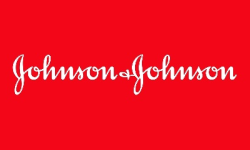
Global Pea Protein Market by Application (Meat Substitutes, Dietary Supplement, Bakery Goods), by Product (Textured, Concentrates, Isolates, Hydrolysate) and Region (North America, Latin America, Europe, Asia Pacific and Middle East & Africa), Forecast To 2028
Summary of the Report
Global pea protein market was worth USD 213.1 million in 2020. It is forecast to grow at 12.7% compound annual growth rate (CAGR). This is due to rising consumer awareness about the importance of healthy eating habits and an active lifestyle. There is also a growing market for products that can perform specific functions such as energy balance, weight loss and muscle repair. There are many types of pea protein, including green, dry and chickpea varieties. It is available in concentrated, textured and isolated forms.
These products are made from plant-based ingredients, which makes them suitable for vegans. They are also non-toxic and non-allergic and can be used in beverages, dietary supplements, bakery products, and other food applications. Market growth will continue to be influenced by the growing importance of a flexible diet due to increasing concerns over the cardiological effects of red meat consumption. In the coming years, the market will be influenced by the growing awareness about the negative effects of food containing gluten and lactose.
The increasing consumption of protein-fortified functional foods will also increase product demand. The market growth is expected to be positive due to the increasing demand for protein supplements in food products. Market growth will be boosted by the increasing awareness of protein powder consumption to promote bone health and muscle development.
Alternative ingredients like hemp, soy and whey could substitute for pea protein. Another ingredient that is gaining popularity is rice protein. Pea and rice proteins are nutritionally similar. They have similar protein levels (typically between 15 and 22 grams per 100-calorie meal) and are both gluten-free and allergy-friendly. Pea protein consumption has been declining due to whey protein's many benefits such as muscle growth stimulation, easy digestion, and market growth.
Application Insights
The market leader in dietary supplements was 38%. Because of its many health benefits, pea protein is often added to nutritional syrups, tablets and energy powders and cereal bars. These include muscle growth, bone health improvement and regulated blood sugar levels. The segment is expected to grow because of the rising awareness about bone health, and improving muscle performance.
From 2021 to 2028, the fastest CAGR is expected to be in the meat substitutes sector. A shift to vegan diets has been prompted by rising health issues such as diabetes and obesity. Global warming is partly due to the impact of animal rearing on the planet's natural resources. Although this effect has yet to be quantified, it is believed that awareness of this factor will shift global food habits toward a more vegan diet. This will help in the growth of the market for meat substitutes. This will encourage the use of pea protein in meat substitutes.
The good texture properties of pea protein will encourage its use in the production and processing of meat products such as beef, chicken, lamb, lamb, and other poultry. The market will be threatened by the increased consumption of soy, tempeh and tofu as meat substitutes in the coming years.
Product Insights
In 2020, the market leader in isolates was the segment that accounted for 47% of global revenue. Because they are non-allergic and have excellent emulsification, isolates are used widely in nutritional supplements for meat products, food drinks, bakery items, and fruit mixes. The growth of the sport nutrition industry is expected to be aided by new product launches from Cadbury and Amway in this segment of the energy mix.
Concentrates are expected to grow at a significant rate between 2021 and 2028. Concentrated pea protein has many attributes such as high digestibility and good emulsification, which make them useful in weight control and dietary supplements applications.
These concentrates can be slowly incorporated into bakery products such as pastries and cakes for their good flavoring and dry texture. The growth of concentrates is expected to be aided by a strong manufacturing base in bakery products, such as those from Germany and France. This is due to the proximity to equipment producers and easy access of wheat and rice raw materials.
Texturing agents are used in baked goods, meat products, and confectionery. The fibrous nature of textured pea proteins will encourage their incorporation into energy powders or fruit juice mixes. The forecast years will see a rise in the use of textured protein due to rising beef production in China, India and Australia.
Regional Insights
North America was the dominant market for pea protein in the world and held 44% of global revenue in 2020. The regional market will be driven by growing demand for products that are gluten-free and rising concerns about Cardiovascular Diseases (CVDs).
In the U.S., there are major meat product producers like Tyson, National Foods and Cargill. This will increase the demand for texturizing agents in meat production. The availability of protein ingredients will be affected by the growing use of canola, soy and other grains for bio-based chemicals. Pea protein will likely become a key ingredient.
Asia Pacific will be the fastest growing regional market in the coming years due to the increasing consumption of nutritionally fortified functional foods products. Market growth is expected to be boosted by the growing demand for meat substitutes as well as allergen-friendly fitness and sports supplements. Manufacturers will have ample raw material supply due to favorable regulatory inclinations in India & China, which are aimed at developing the agricultural industry.
Regional market growth will be fueled by the strong production base in China's food & drink industry due to raw material access and rising domestic consumption. The growing restaurant and hotel industry, as well as the increasing number of retail chains (mainly supermarkets), will play an important role in driving growth in the food and beverage industry, and thereby increasing product demand.
Market Share Insights & Key Companies
This market is very well-consolidated. The majority of the major players are focused on R&D in indigenous technology to extract high quality powders. To ensure continuous supply, manufacturers will likely form partnerships with ecommerce portals. Pea counterpart suppliers will need to come up with new strategies to improve their market visibility due to the high visibility of soy and milk protein ingredients. The following are some of the major players in the global pea protein industry:
-
Burcon Nutrascience
-
Roquette Freres
-
Scoular Company
-
DuPont
-
Cosucra Groupe Warcoing SA
-
Nutri-Pea Ltd.
-
Shandong Jianyuan Group
-
Sotexpro SA
-
Ingredion, Inc.
-
Axiom foods, Inc.
-
Fenchem Inc.
-
Martin & Pleasance
-
The Green Labs LLC
Up Market Research published a new report titled “Pea Protein Market research report which is segmented by Application (Meat Substitutes, Dietary Supplement, Bakery Goods), by Product (Textured, Concentrates, Isolates, Hydrolysate), By Players/Companies Ingredion Inc, Sotexpro SA, The Scoular Company, DuPont, Burcon Nutrascience, Cosucra Groupe Warcoing SA, Fenchem Inc, Axiom Foods Inc, Martin & Pleasance, Roquette Freres, The Green Labs LLC, Nutri-Pea Ltd, Shandong Jianyuan Group”. As per the study the market is expected to grow at a CAGR of XX% in the forecast period.
Report Scope
| Report Attributes | Report Details |
| Report Title | Pea Protein Market Research Report |
| By Application | Meat Substitutes, Dietary Supplement, Bakery Goods |
| By Product | Textured, Concentrates, Isolates, Hydrolysate |
| By Companies | Ingredion Inc, Sotexpro SA, The Scoular Company, DuPont, Burcon Nutrascience, Cosucra Groupe Warcoing SA, Fenchem Inc, Axiom Foods Inc, Martin & Pleasance, Roquette Freres, The Green Labs LLC, Nutri-Pea Ltd, Shandong Jianyuan Group |
| Regions Covered | North America, Europe, APAC, Latin America, MEA |
| Base Year | 2020 |
| Historical Year | 2018 to 2019 (Data from 2010 can be provided as per availability) |
| Forecast Year | 2028 |
| Number of Pages | 227 |
| Number of Tables & Figures | 159 |
| Customization Available | Yes, the report can be customized as per your need. |
The report covers comprehensive data on emerging trends, market drivers, growth opportunities, and restraints that can change the market dynamics of the industry. It provides an in-depth analysis of the market segments which include products, applications, and competitor analysis.

Global Pea Protein Market Report Segments:
The market is segmented by Application (Meat Substitutes, Dietary Supplement, Bakery Goods), by Product (Textured, Concentrates, Isolates, Hydrolysate).
Pea Protein Market research report delivers a close watch on leading competitors with strategic analysis, micro and macro market trend and scenarios, pricing analysis and a holistic overview of the market situations in the forecast period. It is a professional and a detailed report focusing on primary and secondary drivers, market share, leading segments and geographical analysis. Further, key players, major collaborations, merger & acquisitions along with trending innovation and business policies are reviewed in the report.
Key Benefits for Industry Participants & Stakeholders:
- Industry drivers, restraints, and opportunities covered in the study
- Neutral perspective on the market performance
- Recent industry trends and developments
- Competitive landscape & strategies of key players
- Potential & niche segments and regions exhibiting promising growth covered
- Historical, current, and projected market size, in terms of value
- In-depth analysis of the Pea Protein Market
Overview of the regional outlook of the Pea Protein Market:
Based on region, the market is segmented into North America, Europe, Asia Pacific, Latin America and Middle East & Africa (MEA). North America region is further bifurcated into countries such as U.S., and Canada. The Europe region is further categorized into U.K., France, Germany, Italy, Spain, Russia, and Rest of Europe. Asia Pacific is further segmented into China, Japan, South Korea, India, Australia, South East Asia, and Rest of Asia Pacific. Latin America region is further segmented into Brazil, Mexico, and Rest of Latin America, and the MEA region is further divided into GCC, Turkey, South Africa, and Rest of MEA.

Highlights of The Pea Protein Market Report:
- The market structure and projections for the coming years.
- Drivers, restraints, opportunities, and current trends of Pea Protein Market.
- Historical data and forecast.
- Estimations for the forecast period 2028.
- Developments and trends in the market.
1. Meat Substitutes
2. Dietary Supplement
3. Bakery Goods
7. By Product:1. Textured
2. Concentrates
3. Isolates
4. Hydrolysate
- Market scenario by region, sub-region, and country.
- Market share of the market players, company profiles, product specifications, SWOT analysis, and competitive landscape.
- Analysis regarding upstream raw materials, downstream demand, and current market dynamics.
- Government Policies, Macro & Micro economic factors are also included in the report.
We have studied the Pea Protein Market in 360 degrees via. both primary & secondary research methodologies. This helped us in building an understanding of the current market dynamics, supply-demand gap, pricing trends, product preferences, consumer patterns & so on. The findings were further validated through primary research with industry experts & opinion leaders across countries. The data is further compiled & validated through various market estimation & data validation methodologies. Further, we also have our in-house data forecasting model to predict market growth up to 2028.
How you may use our products:
- Correctly Positioning New Products
- Market Entry Strategies
- Business Expansion Strategies
- Consumer Insights
- Understanding Competition Scenario
- Product & Brand Management
- Channel & Customer Management
- Identifying Appropriate Advertising Appeals

Reasons to Purchase the Pea Protein Market Report:
- The report includes a plethora of information such as market dynamics scenario and opportunities during the forecast period
- Segments and sub-segments include quantitative, qualitative, value (USD Million,) and volume (Units Million) data.
- Regional, sub-regional, and country level data includes the demand and supply forces along with their influence on the market.
- The competitive landscape comprises share of key players, new developments, and strategies in the last three years.
- Comprehensive companies offering products, relevant financial information, recent developments, SWOT analysis, and strategies by these players.
Chapter 2 Assumptions and Acronyms Used
Chapter 3 Research Methodology
Chapter 4 Pea Protein Market Overview
4.1 Introduction
4.1.1 Market Taxonomy
4.1.2 Market Definition
4.1.3 Macro-Economic Factors Impacting the Market Growth
4.2 Pea Protein Market Dynamics
4.2.1 Market Drivers
4.2.2 Market Restraints
4.2.3 Market Opportunity
4.3 Pea Protein Market - Supply Chain Analysis
4.3.1 List of Key Suppliers
4.3.2 List of Key Distributors
4.3.3 List of Key Consumers
4.4 Key Forces Shaping the Pea Protein Market
4.4.1 Bargaining Power of Suppliers
4.4.2 Bargaining Power of Buyers
4.4.3 Threat of Substitution
4.4.4 Threat of New Entrants
4.4.5 Competitive Rivalry
4.5 Global Pea Protein Market Size & Forecast, 2018-2028
4.5.1 Pea Protein Market Size and Y-o-Y Growth
4.5.2 Pea Protein Market Absolute $ Opportunity
Chapter 5 Global Pea Protein Market Analysis and Forecast by Application
5.1 Introduction
5.1.1 Key Market Trends & Growth Opportunities by Application
5.1.2 Basis Point Share (BPS) Analysis by Application
5.1.3 Absolute $ Opportunity Assessment by Application
5.2 Pea Protein Market Size Forecast by Application
5.2.1 Meat Substitutes
5.2.2 Dietary Supplement
5.2.3 Bakery Goods
5.3 Market Attractiveness Analysis by Application
Chapter 6 Global Pea Protein Market Analysis and Forecast by Product
6.1 Introduction
6.1.1 Key Market Trends & Growth Opportunities by Product
6.1.2 Basis Point Share (BPS) Analysis by Product
6.1.3 Absolute $ Opportunity Assessment by Product
6.2 Pea Protein Market Size Forecast by Product
6.2.1 Textured
6.2.2 Concentrates
6.2.3 Isolates
6.2.4 Hydrolysate
6.3 Market Attractiveness Analysis by Product
Chapter 7 Global Pea Protein Market Analysis and Forecast by Region
7.1 Introduction
7.1.1 Key Market Trends & Growth Opportunities by Region
7.1.2 Basis Point Share (BPS) Analysis by Region
7.1.3 Absolute $ Opportunity Assessment by Region
7.2 Pea Protein Market Size Forecast by Region
7.2.1 North America
7.2.2 Europe
7.2.3 Asia Pacific
7.2.4 Latin America
7.2.5 Middle East & Africa (MEA)
7.3 Market Attractiveness Analysis by Region
Chapter 8 Coronavirus Disease (COVID-19) Impact
8.1 Introduction
8.2 Current & Future Impact Analysis
8.3 Economic Impact Analysis
8.4 Government Policies
8.5 Investment Scenario
Chapter 9 North America Pea Protein Analysis and Forecast
9.1 Introduction
9.2 North America Pea Protein Market Size Forecast by Country
9.2.1 U.S.
9.2.2 Canada
9.3 Basis Point Share (BPS) Analysis by Country
9.4 Absolute $ Opportunity Assessment by Country
9.5 Market Attractiveness Analysis by Country
9.6 North America Pea Protein Market Size Forecast by Application
9.6.1 Meat Substitutes
9.6.2 Dietary Supplement
9.6.3 Bakery Goods
9.7 Basis Point Share (BPS) Analysis by Application
9.8 Absolute $ Opportunity Assessment by Application
9.9 Market Attractiveness Analysis by Application
9.10 North America Pea Protein Market Size Forecast by Product
9.10.1 Textured
9.10.2 Concentrates
9.10.3 Isolates
9.10.4 Hydrolysate
9.11 Basis Point Share (BPS) Analysis by Product
9.12 Absolute $ Opportunity Assessment by Product
9.13 Market Attractiveness Analysis by Product
Chapter 10 Europe Pea Protein Analysis and Forecast
10.1 Introduction
10.2 Europe Pea Protein Market Size Forecast by Country
10.2.1 Germany
10.2.2 France
10.2.3 Italy
10.2.4 U.K.
10.2.5 Spain
10.2.6 Russia
10.2.7 Rest of Europe
10.3 Basis Point Share (BPS) Analysis by Country
10.4 Absolute $ Opportunity Assessment by Country
10.5 Market Attractiveness Analysis by Country
10.6 Europe Pea Protein Market Size Forecast by Application
10.6.1 Meat Substitutes
10.6.2 Dietary Supplement
10.6.3 Bakery Goods
10.7 Basis Point Share (BPS) Analysis by Application
10.8 Absolute $ Opportunity Assessment by Application
10.9 Market Attractiveness Analysis by Application
10.10 Europe Pea Protein Market Size Forecast by Product
10.10.1 Textured
10.10.2 Concentrates
10.10.3 Isolates
10.10.4 Hydrolysate
10.11 Basis Point Share (BPS) Analysis by Product
10.12 Absolute $ Opportunity Assessment by Product
10.13 Market Attractiveness Analysis by Product
Chapter 11 Asia Pacific Pea Protein Analysis and Forecast
11.1 Introduction
11.2 Asia Pacific Pea Protein Market Size Forecast by Country
11.2.1 China
11.2.2 Japan
11.2.3 South Korea
11.2.4 India
11.2.5 Australia
11.2.6 South East Asia (SEA)
11.2.7 Rest of Asia Pacific (APAC)
11.3 Basis Point Share (BPS) Analysis by Country
11.4 Absolute $ Opportunity Assessment by Country
11.5 Market Attractiveness Analysis by Country
11.6 Asia Pacific Pea Protein Market Size Forecast by Application
11.6.1 Meat Substitutes
11.6.2 Dietary Supplement
11.6.3 Bakery Goods
11.7 Basis Point Share (BPS) Analysis by Application
11.8 Absolute $ Opportunity Assessment by Application
11.9 Market Attractiveness Analysis by Application
11.10 Asia Pacific Pea Protein Market Size Forecast by Product
11.10.1 Textured
11.10.2 Concentrates
11.10.3 Isolates
11.10.4 Hydrolysate
11.11 Basis Point Share (BPS) Analysis by Product
11.12 Absolute $ Opportunity Assessment by Product
11.13 Market Attractiveness Analysis by Product
Chapter 12 Latin America Pea Protein Analysis and Forecast
12.1 Introduction
12.2 Latin America Pea Protein Market Size Forecast by Country
12.2.1 Brazil
12.2.2 Mexico
12.2.3 Rest of Latin America (LATAM)
12.3 Basis Point Share (BPS) Analysis by Country
12.4 Absolute $ Opportunity Assessment by Country
12.5 Market Attractiveness Analysis by Country
12.6 Latin America Pea Protein Market Size Forecast by Application
12.6.1 Meat Substitutes
12.6.2 Dietary Supplement
12.6.3 Bakery Goods
12.7 Basis Point Share (BPS) Analysis by Application
12.8 Absolute $ Opportunity Assessment by Application
12.9 Market Attractiveness Analysis by Application
12.10 Latin America Pea Protein Market Size Forecast by Product
12.10.1 Textured
12.10.2 Concentrates
12.10.3 Isolates
12.10.4 Hydrolysate
12.11 Basis Point Share (BPS) Analysis by Product
12.12 Absolute $ Opportunity Assessment by Product
12.13 Market Attractiveness Analysis by Product
Chapter 13 Middle East & Africa (MEA) Pea Protein Analysis and Forecast
13.1 Introduction
13.2 Middle East & Africa (MEA) Pea Protein Market Size Forecast by Country
13.2.1 Saudi Arabia
13.2.2 South Africa
13.2.3 UAE
13.2.4 Rest of Middle East & Africa (MEA)
13.3 Basis Point Share (BPS) Analysis by Country
13.4 Absolute $ Opportunity Assessment by Country
13.5 Market Attractiveness Analysis by Country
13.6 Middle East & Africa (MEA) Pea Protein Market Size Forecast by Application
13.6.1 Meat Substitutes
13.6.2 Dietary Supplement
13.6.3 Bakery Goods
13.7 Basis Point Share (BPS) Analysis by Application
13.8 Absolute $ Opportunity Assessment by Application
13.9 Market Attractiveness Analysis by Application
13.10 Middle East & Africa (MEA) Pea Protein Market Size Forecast by Product
13.10.1 Textured
13.10.2 Concentrates
13.10.3 Isolates
13.10.4 Hydrolysate
13.11 Basis Point Share (BPS) Analysis by Product
13.12 Absolute $ Opportunity Assessment by Product
13.13 Market Attractiveness Analysis by Product
Chapter 14 Competition Landscape
14.1 Pea Protein Market: Competitive Dashboard
14.2 Global Pea Protein Market: Market Share Analysis, 2019
14.3 Company Profiles (Details – Overview, Financials, Developments, Strategy)
14.3.1 Ingredion Inc
14.3.2 Sotexpro SA
14.3.3 The Scoular Company
14.3.4 DuPont
14.3.5 Burcon Nutrascience
14.3.6 Cosucra Groupe Warcoing SA
14.3.7 Fenchem Inc
14.3.8 Axiom Foods Inc
14.3.9 Martin & Pleasance
14.3.10 Roquette Freres
14.3.11 The Green Labs LLC
14.3.12 Nutri-Pea Ltd
14.3.13 Shandong Jianyuan Group
The global Pea Protein market has been segmented based on
By Application
- Meat Substitutes
- Dietary Supplement
- Bakery Goods
- Textured
- Concentrates
- Isolates
- Hydrolysate
- Asia Pacific
- North America
- Latin America
- Europe
- Middle East & Africa
- Ingredion Inc
- Sotexpro SA
- The Scoular Company
- DuPont
- Burcon Nutrascience
- Cosucra Groupe Warcoing SA
- Fenchem Inc
- Axiom Foods Inc
- Martin & Pleasance
- Roquette Freres
- The Green Labs LLC
- Nutri-Pea Ltd
- Shandong Jianyuan Group
Related Reports
Some other reports from this category!



















